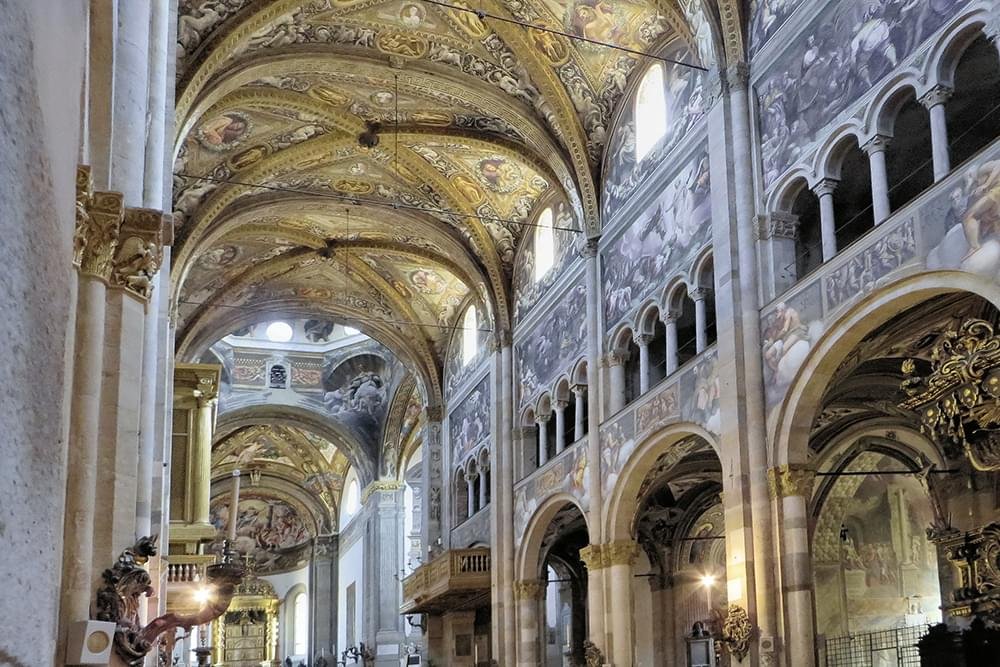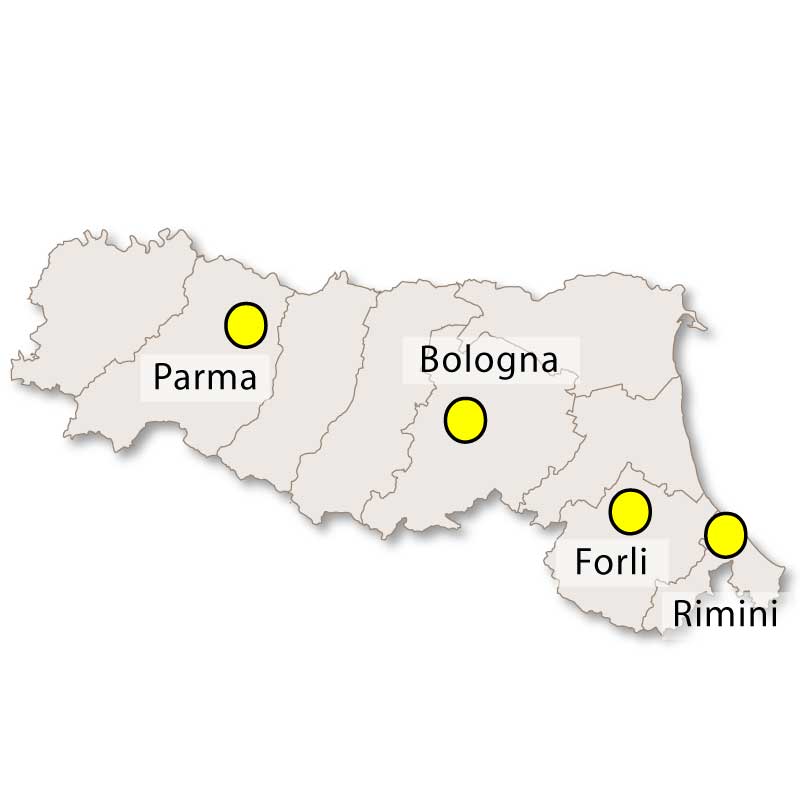
The province of Parma, located in the northwestern part of Emilia-Romagna, is a land of striking contrasts and cultural depth. From the Apennine foothills to the fertile plains of the Po River, the province combines rural beauty, rich history and world-renowned gastronomy in one unforgettable destination.
Famous across the globe for its food products, especially Parmigiano Reggiano and Prosciutto di Parma, the province also offers artistic treasures, noble traditions and warm hospitality. It is a place where every landscape tells a story and every meal is a celebration.

No visit to the province of Parma would be complete without exploring its celebrated culinary scene. Parmigiano Reggiano, known as the King of Cheeses, is produced here according to centuries-old techniques. Visitors can tour dairies and watch the intricate process from milk to wheel.
Equally iconic is Prosciutto di Parma, cured in the gentle breezes of the Apennines. Its delicate flavour is a result of precise craftsmanship and natural conditions. Local trattorias serve it with fresh bread, melon or as part of a rustic antipasto platter that reflects the province’s culinary soul.
The province of Parma is often called the Land of Castles, home to some of the most stunning and well-preserved fortresses in Italy. The Castello di Torrechiara is a fairy-tale sight, perched above vineyards and decorated with romantic frescoes inside.
Other remarkable sites include the Rocca Sanvitale in Fontanellato, complete with its own moat and optical chamber, and the massive stronghold of Bardi, set on a rocky spur in the Apennines. These castles tell stories of medieval power, noble families and Renaissance refinement.
Nature plays a vital role in the life and identity of the province. The Apennine Mountains in the south provide endless opportunities for hiking, cycling and nature watching. Parks such as the Parco dei Cento Laghi offer alpine lakes, beech woods and rare fauna.
In the north, the Po Valley’s flatlands are ideal for leisurely bike rides, river walks and visits to bird reserves. The countryside, dotted with farms and stone villages, provides a peaceful backdrop for slow travel and rural tourism throughout the year.
The province’s towns and abbeys are rich with cultural and religious heritage. The Abbey of Valserena, said to have inspired Stendhal’s *The Charterhouse of Parma*, stands in majestic solitude amid the fields. Its Cistercian architecture and serene setting attract history and art lovers alike.
The town of Fidenza offers a spectacular Romanesque cathedral, while Busseto celebrates the legacy of composer Giuseppe Verdi. Churches, chapels and parish museums across the region house masterpieces by artists like Correggio, Parmigianino and Antelami.
The smaller towns of the province are perfect for exploring authentic ɫ��ɫ life. Colorno features a magnificent ducal palace known as the Versailles of Parma, surrounded by manicured gardens and elegant halls. It is a symbol of Bourbon-era refinement.
In the village of Zibello, known for its unique Culatello di Zibello cured meat, life revolves around tradition and flavor. Soragna and San Secondo, with their noble villas and family-run trattorias, offer a glimpse into the rural soul of the region.
The province of Parma is alive with festivals that celebrate local products and community spirit. From the Prosciutto Festival in Langhirano to the Culatello Fair in Polesine Parmense, these events blend delicious food with music, tradition and storytelling.
Autumn is a particularly festive time, with truffle markets, chestnut fairs and wine tastings drawing locals and tourists alike. These celebrations bring people together around long tables, in castle courtyards or under tents filled with the aroma of sizzling local dishes.
Visitors can immerse themselves in the culture of Parma province through hands-on and educational experiences. Dairy farms, ham cellars and pasta workshops open their doors to visitors eager to learn, taste and understand traditional methods passed down through generations.
The region’s food museums, such as the Museo del Parmigiano Reggiano and Museo del Prosciutto, offer fascinating journeys into the history, science and culture behind its famous foods. Guided tours and tastings make these visits both enjoyable and enlightening.
The province of Parma is a place where the pleasures of life are taken seriously, where beauty is respected and where tradition remains vibrant. It invites you to taste, explore and connect with a land that values authenticity above all.
Whether you come for the castles, the countryside or the cuisine, you leave with a deeper understanding of Italy’s heritage and a memory that lingers like the aroma of aged Parmigiano in the air. Parma province is not just a destination, it is a full-sensory experience.



